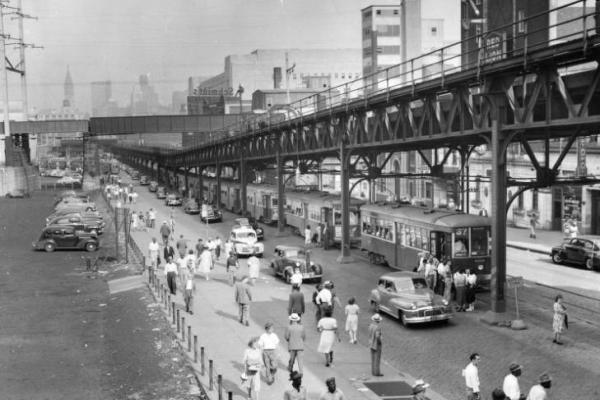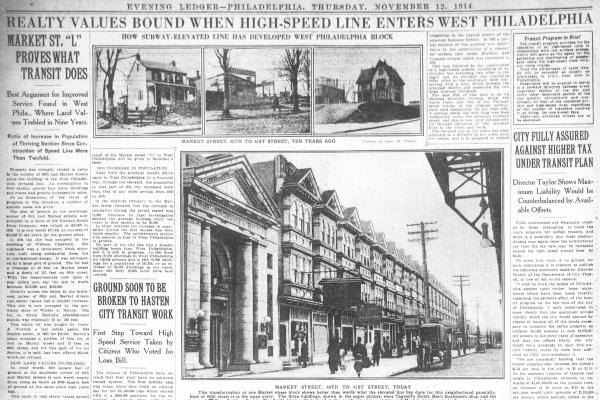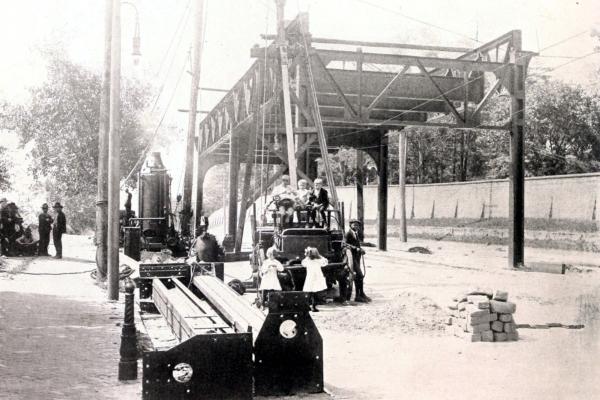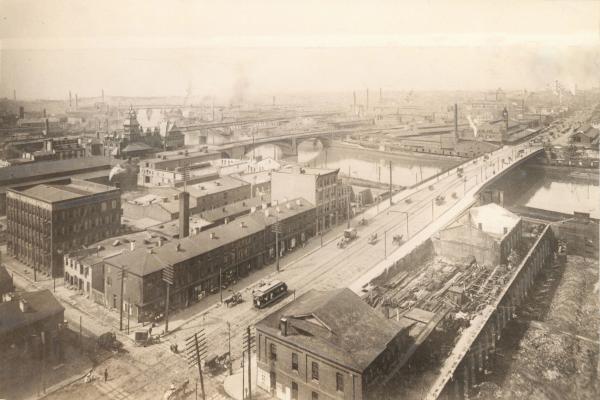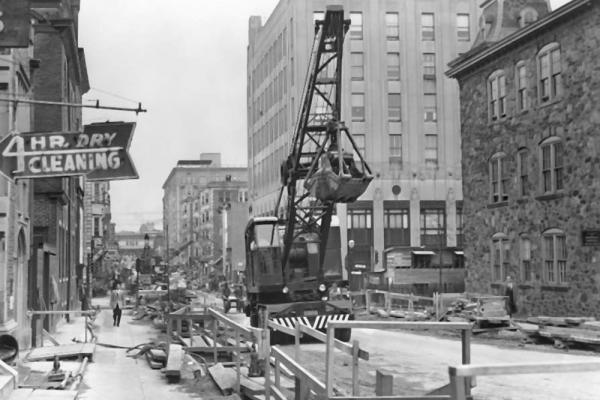Building the Market Street Subway Extension
A subway-tube extension, constructed between 1952 and 1955, replaced the Woodland Avenue surface-trolley lines between 32nd and 39th streets.
The Market Street subway extension was constructed between 1952 and 1955. The project diverted the trolley lines on Woodland Avenue at the University of Pennsylvania into a tube that branched off from the Market Street tunnel at 32nd Street. The trolley extension tube carried passengers under the University campus from Ludlow to 39th Street.
Beginning in the mid-1940s, Edward Hopkinson Jr., chair of the City Planning Commission and chair of the executive committee of the Philadelphia Transportation Company (formerly the Philadelphia Rapid Transit Company), with city planner Edmund Bacon, arranged and oversaw a plan to divert the Woodland Avenue trolleys running through the University of Pennsylvania campus into a subway tunnel. The plan had a twofold goal: first, to relieve traffic congestion at vital intersections; second, to contribute to the redesign of the Penn campus as a greenspace enclave (not coincidentally, Hopkinson, a city powerbroker, was a devoted Penn alumnus and lifetime trustee).(1)
As planned, the subway-extension tunnel (or tube) would direct subway-surface trolleys from the main Market Street tunnel at 32nd Street by twists and turns to Ludow Street, where south- and northbound cars would diverge. Southbound cars would run below the University campus and rise to street level through a portal at 40th Street; at 40th Street, the now-surface trolleys would carry passengers south and west along Woodland and Baltimore avenues, respectively. Northbound cars would leave the subway-extension tunnel at Ludlow, cross Market and Filbert streets, and then head west on Lancaster Avenue to a turnaround on Malvern Avenue at 63rd Street, near the Overbrook neighborhood.(2)
In 1951, City Council authorized the Pennsylvania Transportation Company to operate the trolley-tube system, which was financed by a $6 million bond issuance. During the underground-construction phase, 1952–1955, temporary tracks were laid along Locust Street to divert the trolleys off Woodland and continue passenger service from 36th Street (at Penn) out to 40th Street. Once the tube extension was completed, the Woodland trolleys at Penn passed into history. In 1957, Penn acquired title to the Woodland Avenue roadbed between Chestnut and Spruce streets. And in 1964, the University acquired the roadbed between Spruce and 38th streets.(3)
(1)Edmund Bacon, interview by Lydia Messmer, Memories Project, 25 May 1988, University of Pennsylvania Archives & Records Center (hereafter UARC), UPB1.9MM, box 2, folder 13.
(2) Subcommittee of the Technical Advisory Committee on Location Transportation, “Proposal for Extension of Subway Surface Tunnel to Woodland Avenue at 40th Street,” 10 September 1947, UARC UPA4, box 29, folder “Development Program (Committee on Physical Development)—II”; Raymond F. Leonard (City Planning Commission Division of Land Planning) to Edmund N. Bacon, memorandum, 6 September 1946, Philadelphia City Archives, City Planning Commission Files, box 76 A–1974, folder “Redevelopment—University City, July–December 1962”; author’s contemporary visual inspection of the structure and operation of the subway extension system.
(3) Untitled chronology of subway and subway-surface construction and street closings in the University of Pennsylvania area, 1920s–1960s, UARC UPP1, box 5, folder “Campus Expansion”; Trolley Subway to 40th St. Ok’d,” Philadelphia Evening Bulletin, 25 January 1951, Special Collections Research Center, Temple University Libraries; “Trolley Detours Being Prepared,” Philadelphia Inquirer, 22 March 1953, Special Collections Research Center, Temple University Libraries; University of Pennsylvania inventory of streets, 1882–1968, provided by UARC.

